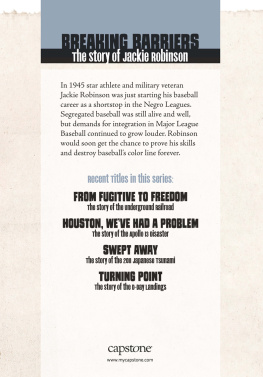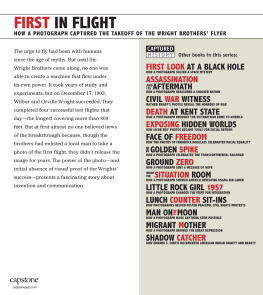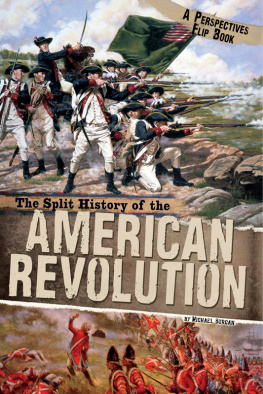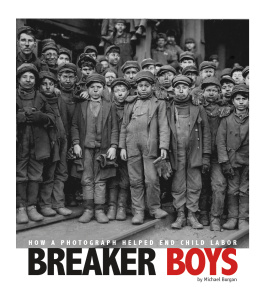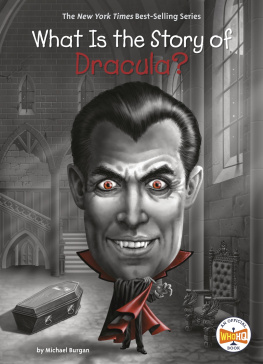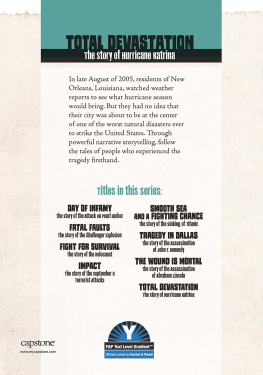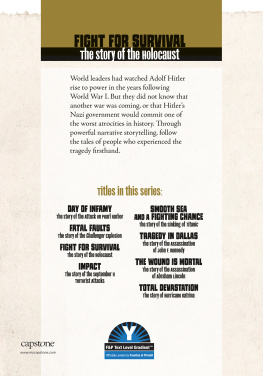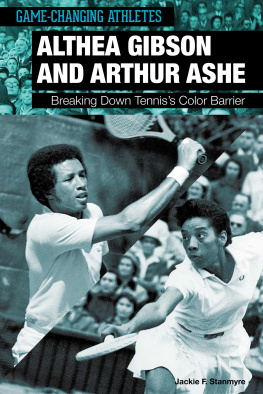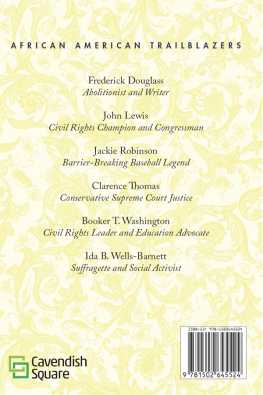Michael Burgan - Breaking Barriers: The Story of Jackie Robinson
Here you can read online Michael Burgan - Breaking Barriers: The Story of Jackie Robinson full text of the book (entire story) in english for free. Download pdf and epub, get meaning, cover and reviews about this ebook. year: 2018, publisher: Capstone, genre: Detective and thriller. Description of the work, (preface) as well as reviews are available. Best literature library LitArk.com created for fans of good reading and offers a wide selection of genres:
Romance novel
Science fiction
Adventure
Detective
Science
History
Home and family
Prose
Art
Politics
Computer
Non-fiction
Religion
Business
Children
Humor
Choose a favorite category and find really read worthwhile books. Enjoy immersion in the world of imagination, feel the emotions of the characters or learn something new for yourself, make an fascinating discovery.
- Book:Breaking Barriers: The Story of Jackie Robinson
- Author:
- Publisher:Capstone
- Genre:
- Year:2018
- Rating:3 / 5
- Favourites:Add to favourites
- Your mark:
- 60
- 1
- 2
- 3
- 4
- 5
Breaking Barriers: The Story of Jackie Robinson: summary, description and annotation
We offer to read an annotation, description, summary or preface (depends on what the author of the book "Breaking Barriers: The Story of Jackie Robinson" wrote himself). If you haven't found the necessary information about the book — write in the comments, we will try to find it.
Breaking Barriers: The Story of Jackie Robinson — read online for free the complete book (whole text) full work
Below is the text of the book, divided by pages. System saving the place of the last page read, allows you to conveniently read the book "Breaking Barriers: The Story of Jackie Robinson" online for free, without having to search again every time where you left off. Put a bookmark, and you can go to the page where you finished reading at any time.
Font size:
Interval:
Bookmark:



Moses Fleetwood Walker (top right) played with the Syracuse Stars of the International League from 1888 to 1889.
In 1945 two professional baseball leagues prepared to start their seasons. The better known of the two was Major League Baseball, which had 16 teams across the Northeast and Midwest. Its players, all white, made good salaries and played in large, well-maintained ballparks. Some of the Major League cities also had teams from the Negro Leagues. With a few exceptions, the black players on those teams struggled to earn a living.
In the early days of professional baseball, blacks and whites had sometimes played together. Moses Fleetwood Walker is often considered the first African-American to play in a professional league. He played for several teams including the Toledo Blue Stockings of the American Association during the 1884 season. But soon after that the pro teams set up what was called the and meant that black players could no longer play with whites in Major League Baseball. White players with racist attitudes simply refused to play with or even against African-Americans. With the best teams and the highest salaries, Major League teams remained the desired goal for every ballplayer. But the color line ensured that even the best black players had no hope of making these teams.
During the 1930s and early 1940s, a small number of Americans, some of them black sportswriters, called for World War II (19391945) boosted the efforts of people who wanted to see the color line broken.
The United States fought to defeat leaders in Germany, Italy, and Japan who did not believe in democracy or equality. Blacks and others argued that if inequality and lack of freedom were wrong elsewhere, they were wrong in the United States too. Black American military personnel were facing the same risks as whites in battle, but they were not treated equally at home.
One black American who served in the military during the war was Jackie Robinson. He had been a star athlete in four sports while in high school and at the University of California at Los Angeles (UCLA). Many people believed Robinson was skilled enough to play baseball in the Majors. In 1945 he got his chance to prove it.
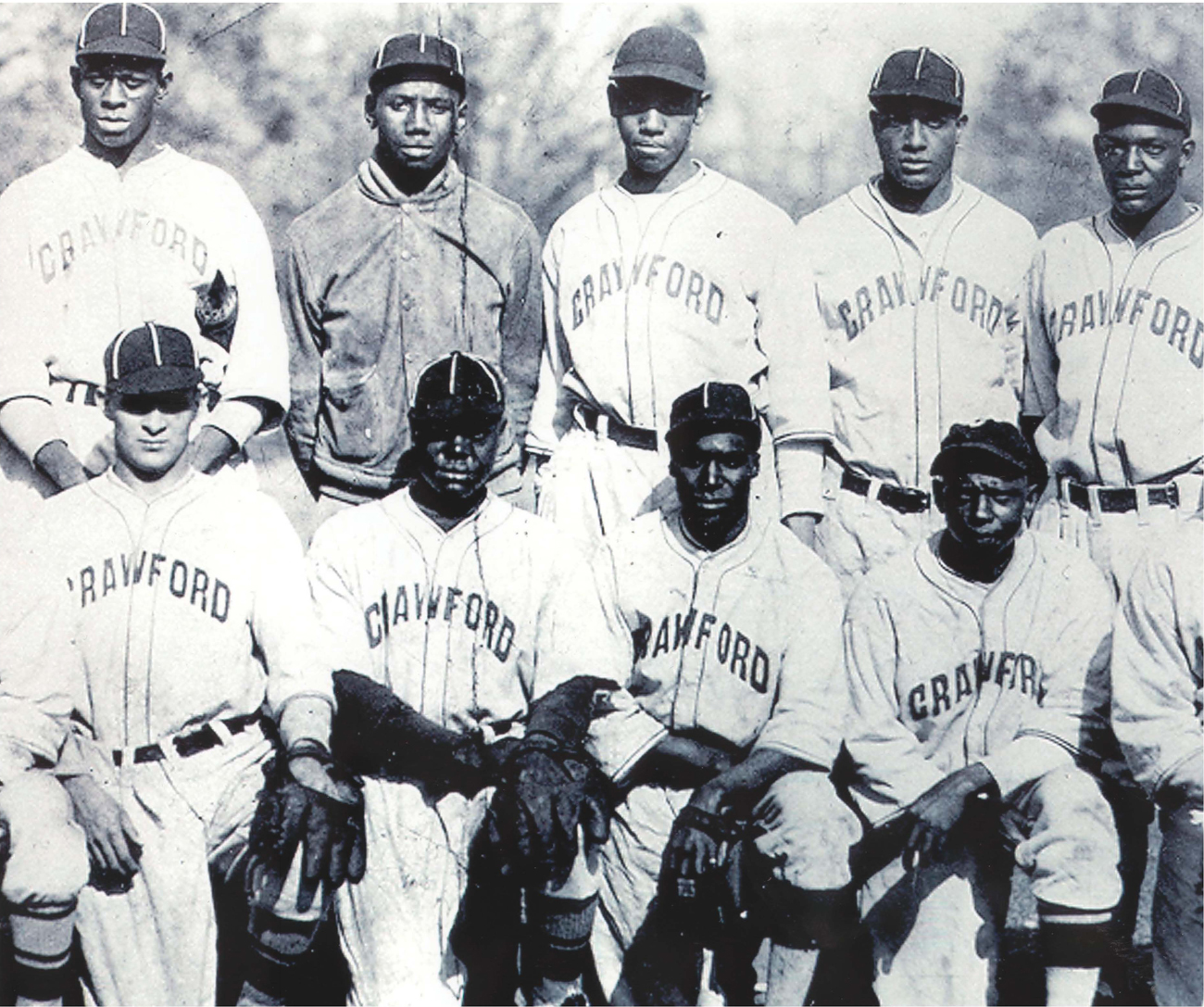
The 1932 Pittsburgh Crawfords. The Crawfords of the 1930s are still considered one of the best Negro League teams ever assembled.
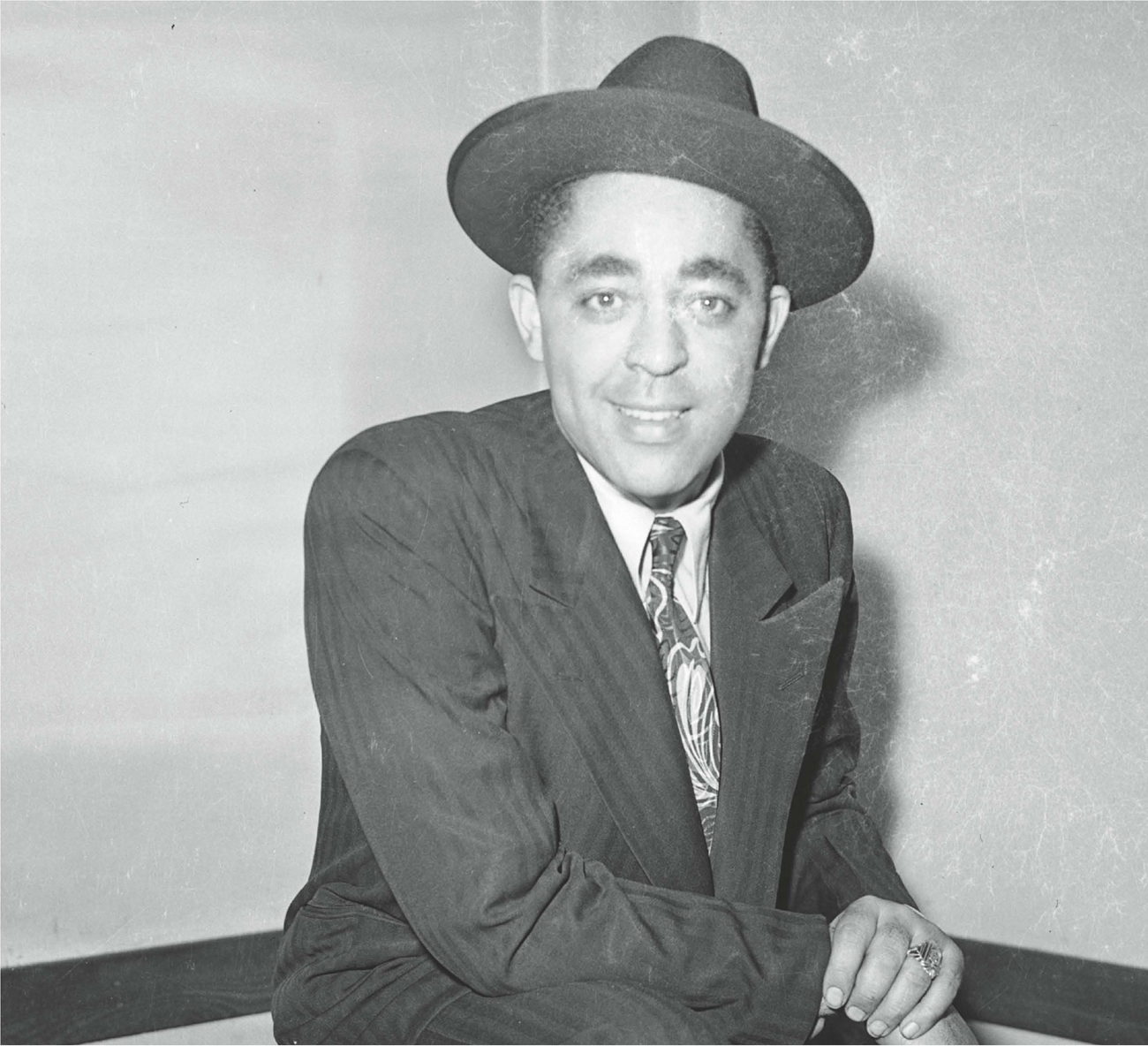
Wendell Smith
Wendell Smith walked into Bostons Fenway Park, home of the Red Sox. As a sports reporter, he had spent time in many ballparks. But this visit was different.
Smith entered Fenway Park with three ballplayers from the Negro Leagues by his side. The players were scheduled to try out for the Red Sox and perhaps play for them in the future. One player was Marvin Hitter Williams, an infielder with the Philadelphia Stars. The second was outfielder Sam Jethroe of the Cleveland Buckeyes, known as the Jet because of his speed. The third player was Jackie Robinson, a shortstop for the Kansas City Monarchs.
Smiths efforts to get black players a tryout with the Red Sox had some history. In 1944 Boston city councilman Isadore Muchnick wrote to the Red Sox insisting that the team let black players try out. If not, Muchnick promised to deny the Red Sox the special permission they needed to play Sunday games in Boston. Red Sox general manager Eddie Collins responded that no African-Americans wanted to play for the club. Collins claim wasnt surprising. Major League team owners and managers typically insisted that baseballs color line didnt even exist.
When Smith heard about Collins response, he wrote Muchnick. He said he could find plenty of black ballplayers eager to play for the Red Sox.
For Smith, breaking the color line was personal. In his high school days in the early 1930s, he had been a star pitcher. But he had known he would never be recruited by a Major League team because he was black. After joining the Pittsburgh Courier, a newspaper for African-Americans, he made it his mission to break baseballs color line.
Smith didnt necessarily think the three players with him today were the best players in the Negro Leagues. But he thought Robinson in particular had qualities that would be important if a Major League team wanted to sign him. Robinson had not actively played baseball for several years because of his time in the military. But he had played on integrated teams before. Smith suspected that Robinson knew the kind of racism he would face and would be able to deal with it. But he would also stand up for himself when he needed to.
Muchnick and several Red Sox officials watched the three black ballplayers that day. Collins was nowhere to be seen. As the tryouts went on, Robinsons performance stood out. At the plate, he hit several home runs over Fenways famous Green Monster wall in left field. Impressive as Robinsons performance was, Smith had to wonder if the Red Sox would seriously consider signing a black player. He suspected there would be more work to do to help a black player break baseballs color line.
The baseball season was underway when Branch Rickey met with Wendell Smith. Rickey was the president and part owner of the Major League Brooklyn Dodgers. He had just told the press that he wanted to form a new, all-black team called the Brooklyn Brown Dodgers. The team would play in a new league and use Ebbets Field, the Dodgers home park.
Rickey knew of Smiths interest in integrating baseball and the Boston tryout. In his office Rickey asked, Were there any players in your group really good enough to make the Majors?
There was one player who could make good in any league, Smith replied. Jackie Robinson.
Jackie Robinson! Rickey said. I knew he was an All-American football player but I didnt know he played baseball.
Rickey was interested in what Smith had to say about Robinsons skills on the field and his personality off of it. Rickey didnt tell Smith, but in recent years hed begun considering signing a black player to the Brooklyn Dodgers. The team had never won a World Series. Rickey knew that some of the best players in the Negro Leagues could certainly help the Dodgers pursue a championship. But Rickey also saw breaking the color barrier as the right thing to do. And he had the support of the Dodgers other owners.
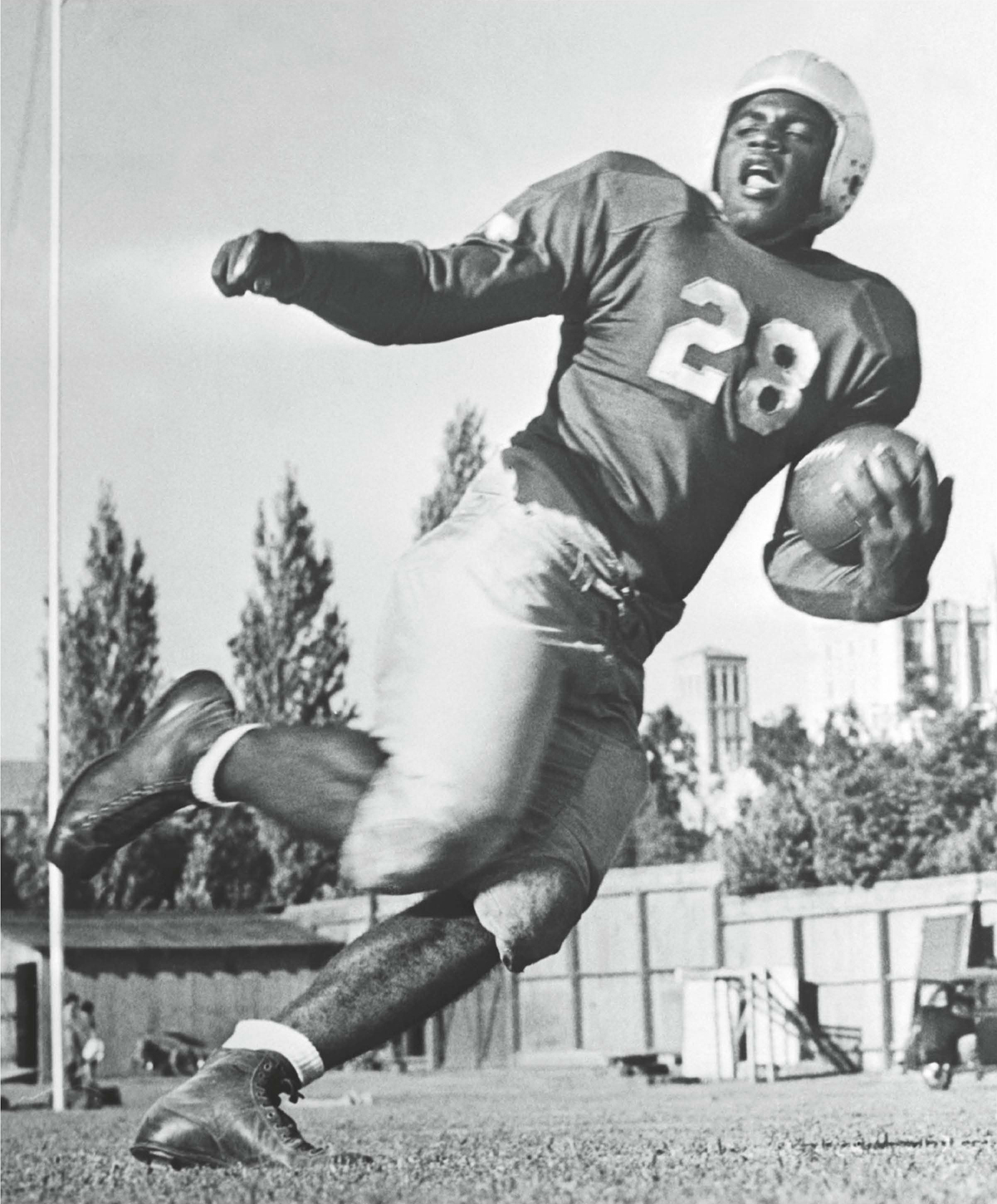
Jackie Robinson lettered in four sports, including football, during his college career at UCLA.
Of course, breaking the color line was sure to generate a lot of criticism from other Major League team owners. It would also upset some fans and players with racist attitudes.
Rickey was sure the worst reactions would be in the South. The so-called Jim Crow laws segregating blacks and whites seemed to be stronger than ever in Southern states.
Font size:
Interval:
Bookmark:
Similar books «Breaking Barriers: The Story of Jackie Robinson»
Look at similar books to Breaking Barriers: The Story of Jackie Robinson. We have selected literature similar in name and meaning in the hope of providing readers with more options to find new, interesting, not yet read works.
Discussion, reviews of the book Breaking Barriers: The Story of Jackie Robinson and just readers' own opinions. Leave your comments, write what you think about the work, its meaning or the main characters. Specify what exactly you liked and what you didn't like, and why you think so.

